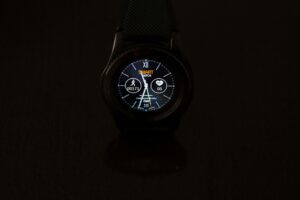Are you eager to take your fitness journey to the next level? If so, a pedometer can be your best ally. These handy devices do more than just count steps; they provide valuable insights into your daily activities and help you set achievable goals. But wait—how accurate is that little gadget on your hip? To truly harness its potential, calibrating it properly is essential. Whether you’re an avid walker or just getting started, understanding how to calibrate your pedometer can make all the difference in tracking those hard-earned steps. Let’s dive into what a pedometer is and explore the ins and outs of calibration!
What is a Pedometer and How Does it Work?
A pedometer is a small device designed to track the number of steps you take throughout the day. It typically clips onto your clothing or fits comfortably on your wrist, making it easy to carry along during any activity.
These devices use sensors to detect motion. Most commonly, they operate using an accelerometer that measures movement in three dimensions. When you walk or run, these sensors register each step and convert this data into measurable figures.
Some modern pedometers also include features like distance tracking and calorie counting. They often connect with apps that allow for detailed analysis of your daily activities and long-term trends. With just a glance at your pedometer’s display, you can gain insight into how active you’ve been—and that’s where calibration comes in to ensure accuracy!
The Benefits of Using a Pedometer

Using a pedometer can transform your approach to fitness. Tracking steps provides a tangible way to monitor daily activity levels.
This simple device encourages movement throughout the day, nudging you toward your fitness goals. You might find yourself taking those extra few steps, simply motivated by the numbers on the screen.
Many people experience increased accountability when using a pedometer. Sharing step counts with friends or competing in challenges can foster camaraderie and motivation.
Moreover, tracking your progress helps identify patterns over time. Are there days when you’re more active? Understanding these trends can guide lifestyle changes for better health outcomes.
Recording achievements boosts self-confidence and reinforces healthy habits. Each milestone reached brings satisfaction and inspires further commitment to an active lifestyle.
Factors to Consider Before Calibrating Your Pedometer

Before diving into calibration, take a moment to consider several vital factors.
Your stride length is key. Everyone walks differently, and knowing yours helps ensure accuracy. Measure it by walking a known distance and noting how many steps you took.
Also think about your pedometer’s type. Some models come with built-in sensors that may require different calibration methods compared to basic units.
Environmental conditions can affect readings too. Walking on uneven terrain or inclines might lead to discrepancies in step count.
Consider the fit of your device. A loose pedometer could result in inaccurate tracking while a snug fit ensures better data collection during movement.
Taking these elements into account will pave the way for precise calibration, enhancing your overall experience with this handy tool.
Different Methods of Calibrating Your Pedometer

Calibrating your pedometer can seem daunting, but it’s quite straightforward. One popular method involves measuring a known distance. Walk or run a specific distance, such as 1 mile, and track the number of steps you take. Divide the total steps by the distance to determine your average stride length.
Another approach is using personal data. If you know your height and weight, many devices allow input for automatic calibration based on these metrics. This method offers a good baseline without needing extensive manual effort.
Some advanced models come with GPS capabilities that automatically adjust based on real-time tracking. These offer precision while eliminating guesswork in step counting.
Consider utilizing online tools or apps designed for calibration support. They guide you through custom settings tailored to individual walking habits and preferences, ensuring more accurate readings over time.
Tips for Accurate Calibration
To achieve accurate calibration of your pedometer, start by selecting a flat and even surface. This helps in obtaining consistent readings without the interference of inclines or declines.
Next, measure out a known distance using a tape measure or marked path. A straight line is ideal for keeping things straightforward.
When you walk this distance, maintain a steady pace. Avoid sudden changes in speed to ensure that each step counts accurately.
It’s also helpful to record your steps during this trial run. Compare the number of counted steps with the actual distance walked to determine your pedometer’s accuracy.
Adjust settings on your device based on these findings. Many models allow fine-tuning based on stride length or sensitivity levels for better precision.
Repeat this process regularly as factors like footwear and walking style can influence results over time. Remember, consistency is key!
Troubleshooting Common Issues with Pedometers
Pedometers are handy devices, but they can sometimes misbehave. If your step count seems off, check the settings first. Ensure that you’ve inputted your correct stride length and weight.
Another common issue is inaccurate readings during physical activities like running or cycling. Your pedometer may not be designed for all types of movement. Consider using a device better suited for varied exercises if this is a frequent problem.
Battery issues can also lead to erratic behavior. Regularly replace batteries to maintain accuracy.
Environmental factors play a role too. Extreme temperatures or wet conditions might affect performance. Store your pedometer in a stable environment when not in use for optimal results.
By identifying these common issues early on, you can enhance your experience with this useful tool and ensure more reliable tracking of your daily activity.
Conclusion: Making the Most of Your Pedometer for Accurate Step Tracking
Making the most of your pedometer for accurate step tracking involves understanding its functions and ensuring it’s properly calibrated. Start by familiarizing yourself with how it works and why calibration is essential. This will help you appreciate the accuracy in your daily activity monitoring.
Utilize the benefits a pedometer offers, such as motivating you to stay active and providing insights into your overall health. Remember that factors like stride length, walking surface, and device placement can all impact readings.
As you calibrate, consider various methods to find what suits you best. Whether measuring distances or taking specific steps on flat ground, each approach has its merits. Be attentive to tips for achieving precise calibration—these details matter.
Should issues arise during use, troubleshooting common problems can keep frustration at bay while maintaining an efficient tracking experience.
By following these guidelines and dedicating time to calibrate effectively, you’ll be better equipped to track your steps accurately and enhance your fitness journey.










